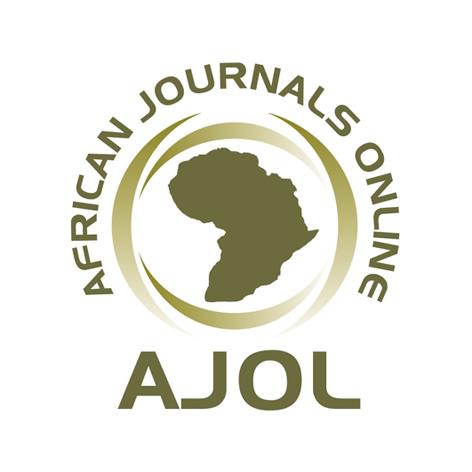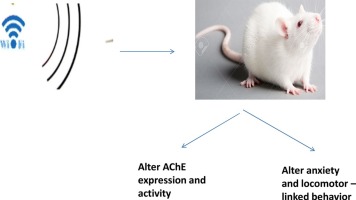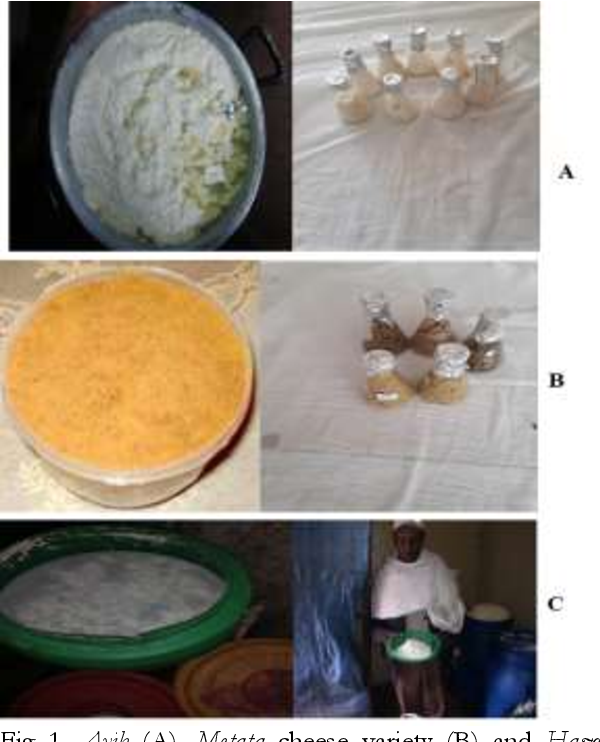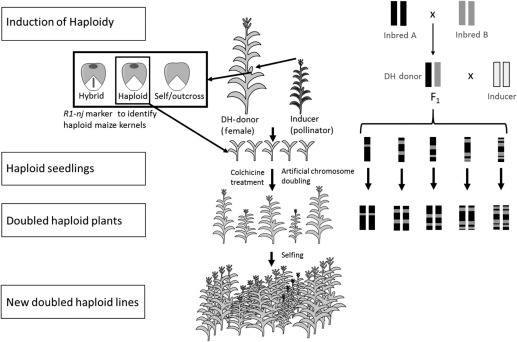Activation of Lactoperoxidase System: Evaluation of the Acidification Rate, Microbial Quality, and Shelf Life of Camel and Cow Milk
Downloads
Abstract: Camel milk is produced in areas where there is lack of milk cooling facilities coupled with high
ambient temperature that exacerbates milk spoilage before it reaches the ultimate market and consumers.
To overcome this problem lactoperoxidase system (LPS) is one the methods to preserve freshness of milk
until it is marketed or reaches where there is milk cooling facilities. This study was conducted with the
objectives of assessing the effect LPS activation on preservation of raw camel and cow milk and to
comparing acidification rate of LPS activated camel and cow milk. The effect of LPS activation on
inhibition of selected pathogens (i.e. Escherichia coli and Staphylococcus aureus) was also studied. The treatments
consisted of a 2 x 4 factorial experiment (LPS activated and non LPS activated with 0, 6, 12, and 24 hrs
storage time at 30°C treatments) in a Completely Randomized Design (CRD) with a factorial arrangement
and three replications per treatment. Twenty-four camel and cow milk samples obtained from Errer valley
ago-pastoralists and Haramaya University Dairy farm, respectively were examined for titratable acidity, total
bacterial count (TBC) and coliform count (CC). The result revealed that titratable acidity, CC and TBC in
LPS activated milk samples were significantly lower (P< 0.05) than their respective values in non LPS
activated milk samples for both cow and camel milk, stored for 6, 12 and 24 hrs. The percent of acidity
were not significantly (P>0-05) different than that of the initial acidity level in LPS activated cow and camel
milk up to 12hrs of storage. LPS activated milk showed bactericidal effect against TBC and CC both in
cow and camel milk. In the current experiment, activation of LPS in camel milk reduced the growth rate
of E. coli as compared to non LPS activated milk samples. The bactericidal effect of the LPS suggests that
activation of the LPS would be of paramount importance in controlling the growth of microorganisms and
improving the microbial quality of both cow and camel milk in the study area. Cow milk with activated LPS
showed a slight delay in acidification rate compared to the non LPS activated cow and camel milk using a
thermophilic starter culture. From the study, we can suggest that LPS activation of both cow and camel
milk helps to extend the shelf life of fresh milk up to 6 and 12 hours, respectively and enables milk
producers to sell fresh milk within this time frame and reduce milk wastage. LPS activation can be used in
improving the microbiological quality and the shelf-life of raw camel and cow milk where milk cooling
facilities are not available. LPS activated milk could also be used for manufacturing of fermented milk
products.
Keyword: Camel milk; cow milk; hydrogen peroxide; lactoperoxidase system; thiocyanate
Alganesh Tola. 2002. Traditional milk and milk products handling practice and raw milk in Eastern Wollega. M .Sc. Thesis presented to the School of Graduate Studies of Alemaya University, Ethiopia.
Basaga, H., and Dik, T. 1994. Effect of the lactoperoxidase system on the activity of starter cultures for yoghurt production. Milchwissenschaft, 49: 144–146.
Eyassu Seifu, Buys, E. M. and Donkin, E. F. 2003. Effect of the lactoperoxidase system on the activity of mesophilic cheese starter cultures in goat milk. International Dairy Journal 13: 953–959.
Eyassu Seifu, Buys, E. M., Donkin, E. F., and Petzer, I. M. 2004. Antibacterial activity of the lactoperoxidase system against foodborne pathogens in Saanen and South African Indigenous goat milk. Food Control, 15: 447–452.
Eyassu Seifu, Buys E. M., and Donkin E. F. 2005. Significance of the lactoperoxidase system in the dairy industry and its potential applications: A review. Trends Food Science Technolog,y ,16: 137-154.
Eyassu Seifu. 2007. Handling, preservation and utilization of camel milk and camel milk products in Shinile and Jijiga Zones, eastern Ethiopia. Livestock Research for Rural Development, 19: 1-9.
FAO (Food and Agriculture Organization of the United Nations). 2002. World Agriculture: towards 2015/2030. FAO Perspective. Earth Scans Publication, London.
FAO/WHO (Food and Agriculture Organization of the United Nations, and World Health Organization). 2000. Guidelines for the preservation of raw milk by use of the lactoperoxidase system. CAC/GI 13-1991. Vol. 12. Rome, Italy.
FAO/WHO (Food and Agriculture Organization of the United Nations, and World Health Organization). 2005. Benefits and potential risks of the lactoperoxidase system of raw milk preservation: report of an FAO/WHO technical meeting, FAO, Rome, Italy, 28th November – 2nd December 2005. pp 19-20
Farah, Z, Mollet, M., Younan, M. and Dahir, R. 2007. Camel dairy in Somalia: Limiting factors and development potential. Livestock Science, 110: 187-191.
Firew Kassa, Zelalem Yilma, Getnet Assefa, Tadesse Bekele, Yohannes Gojam, Rahel Nebiyu and Binyam Kassa. 2013. Evaluation of Lactoperoxidase system as raw milk preservative at different storage temperature conditions in the central highlands of Ethiopia. Livestock Research for Rural Development, 25 (4): 2013.
Getachew Felleke. 2003. A Review of the Small Scale Dairy Sector - Ethiopia. FAO Prevention of Food Losses Programme: Milk and Dairy Products, Post-harvest Losses and Food Safety in Sub Saharan Africa and the Near East.
Helen Nigussie. 2007. Traditional handling practices, preservation methods and evaluation of the lactoperoxidase system and container smoking on the microbial quality of cows’ and goats’ milk produced in Kombolchaworeda, eastern Ethiopia. MSc Thesis. Haramaya University, Ethiopia.
IDF (International Dairy Federation). 1988. Code of practice for preservation of raw milk by the lactoperoxidase system. Bulletin of International Dairy Federation, 234 p.
IDF (International Dairy Federation). 1991. Milk and milk products enumeration of microorganisms, colony count at 300C. International IDF Standard 100B: 1991: International Dairy Federation, Brussels, Belgium.
Knoess, K. H., Makjdun, A. J., Rafig, M. and Hafeez, M. 1986. Milk production potential of the dromedary with special reference to the province of Punjab. World Animal Review, 57: 11-21.
Korhonen, H. 1980. A new method for preserving raw milk-The lactoperoxidase antibacterial system. World Animal Review, 35: 23–29.
Kula Jilo and Dechasa Tegegne. 2016. Chemical Composition and Medicinal Values of Camel Milk. International Journal of Research Studies in Biosciences 4 (4): 13-25.
Kula Jilo. 2016. Medicinal Values of Camel Milk. International Journal of Veterinary Science and Research, 2(1): 018-025.
Kumar, R. and Bhatia, K. L. 1999. Standardization of method for lactoperoxidase assay in milk. Lait, 79: 269–274.
Lambert, J. C. 2001. Global lactoperoxidase programme: The lactoperoxidase system of milk preservation. Bulletin of the International Dairy Federation, 365: 19–20.
MoARD (Ministry of Agriculture and Rural Development). 2014. Ethiopian Livestock Master Plan (LMP): Roadmaps for growth and transformation (2015-2020). Developed by the Livestock Master Plan team. Livestock Resources Development Sector. Addis Ababa, Ethiopia.
Mulugojjam Adugnaa, Eyassu Seifu, Ameha Kebeded and Reiner Doluschitz. 2013. Quality and Safety of Camel Milk along the Value Chain in Eastern Ethiopia. International Journal of Food Studies, 2: 150-157.
Njage, K. M. P. and Wangoh, J. 2008. Impact of the Lactoperoxidase System on Activity of Selected Lactic Starter Cultures in Camel Milk. Food 14: 70-74.
Njage, K. M. P. and Wangoh, J. 2010. Effect of lactoperoxidase-thiocyanate-hydrogen peroxide system and storage temperature on keeping quality of raw camel milk. African Journal of Food, Agriculture, Nutrition and Development, 10:10.
O’Connor, C. B. 1995. Rural Dairy technology. Training manual No 1. ILRI (International Livestock Research Institute), Addis Ababa, Ethiopia.
Pruitt, K. M. and Njage, D. N. 1991. The lactoperoxidase system of bovine and human milk. In: Robinson, D.S. and Eskin, N.A.M. (Eds.), Oxidative enzymes in foods (pp. 133–174). London: Elsevier Applied Science.
Richardson, G. H. 1985. Standard Methods for the Examination of Dairy Products, 15th Edn. American Public Health Association, Washington, D.C. 168-196.
Sarkar, S. and Misra, A. K. 1992. Utilization of milk preserved by LP system for manufacture of cultured milk products. Indian Dairyman, 44: 536–540.
SAS (Statistical Analysis System). 2000. Users Guide: Statics Version 8, SAS institute. Inc, Cary, NC.
Stephens, S., Harkness, R. A. and Cockle, S. M. 1979. Lactoperoxidase activity in guinea-pig milk and saliva: correlation in milk of lactoperoxidase with bactericidal activity against Escherichia coli. British Journal of Experimental Pathology, 60: 252 – 258.
Taye Tolemariam, 1998. Qualities of cow milk and the effect of lactoperoxidase system on preservation of milk at Arsi, Ethiopia. M .Sc. Thesis presented to the School of Graduate Studies of Haramaya University, Ethiopia. 63 pp.
UNDP/MOA (United Nation Development Program/Ministry of Agriculture). 1993. Food production, food security and nutrition: In: Getachew Feleke, 2003. Assessment of the Ethiopian dairy sub sector. FAO action program for the preservation of food losses. FAO/MOA, Addis Ababa.
Workneh Abebe, 1997. Assessment of nutritive value of and consumer preferences for some varieties of cheese made from goat milk. M .SC. Thesis presented to the School of Graduate Studies of Alemaya University of Agriculture, Ethiopia. 108p.
Yonas Hailu, Eyassu Seifu and Zelalem Yilma. 2014. Physicochemical properties and consumer acceptability of soft unripened cheese made from camel milk using crude extract of ginger (Zingiber officinale) as coagulant. African Journal of Food Science, 8(2): 87-91.
Copyright (c) 2018 Bekele Amenu, Mitiku Eshetu, Yonas Hailu, Egon Bech Hansen

This work is licensed under a Creative Commons Attribution-NonCommercial-NoDerivatives 4.0 International License.
- I am authorized by my co-authors to enter into these arrangements.
- I warrant, on behalf of myself and my co-authors, that:
- the article is original, has not been formally published in any other peer-reviewed journal, is not under consideration by any other journal and does not infringe any existing copyright or any other third party rights;
- I am/we are the sole author(s) of the article and have full authority to enter into this agreement and in granting rights to Springer are not in breach of any other obligation;
- the article contains nothing that is unlawful, libellous, or which would, if published, constitute a breach of contract or of confidence or of commitment given to secrecy;
- I/we have taken due care to ensure the integrity of the article. To my/our - and currently accepted scientific - knowledge all statements contained in it purporting to be facts are true and any formula or instruction contained in the article will not, if followed accurately, cause any injury, illness or damage to the user.
- I, and all co-authors, agree that the article, if editorially accepted for publication, shall be licensed under the Creative Commons Attribution License 4.0. If the law requires that the article be published in the public domain, I/we will notify Springer at the time of submission, and in such cases the article shall be released under the Creative Commons 1.0 Public Domain Dedication waiver. For the avoidance of doubt it is stated that sections 1 and 2 of this license agreement shall apply and prevail regardless of whether the article is published under Creative Commons Attribution License 4.0 or the Creative Commons 1.0 Public Domain Dedication waiver.
- I, and all co-authors, agree that, if the article is editorially accepted for publication in Haramaya Journals, data included in the article shall be made available under the Creative Commons 1.0 Public Domain Dedication waiver, unless otherwise stated. For the avoidance of doubt it is stated that sections 1, 2, and 3 of this license agreement shall apply and prevail.












